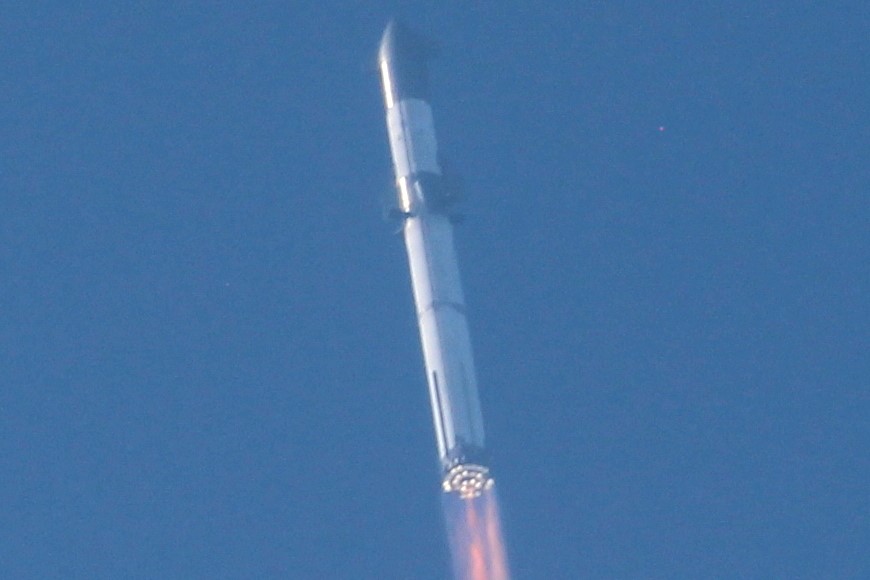SpaceX’s Starship, the largest and most powerful rocket ever built, took to the skies for the second time.
The 120-meter-high rocket, soaring from SpaceX’s base in Boca Chica, southern Texas, experienced another dramatic test flight after a previous attempt ended in a massive explosion in April 2023.
The liftoff occurred shortly after 7 a.m. local time on November 18, 2023, and early indications were positive.
As the rocket climbed into the skies, the Starship module successfully detached from the Super Heavy propulsion stage.
However, the celebration was short-lived as the Super Heavy stage, responsible for powering the initial ascent, exploded during its scheduled descent, failing to reach the ground.
The separation marked a crucial phase in the test flight. Still, the excitement turned to disappointment when both stages of the Starship rocket experienced what SpaceX referred to as an “unplanned rapid disassembly.”
The Starship module, intended for crewed missions and deep-space exploration, and the Super Heavy stage, equipped with a staggering 33 engines, were thus both destroyed in the test.
SpaceX, founded by billionaire entrepreneur Elon Musk, acknowledged the challenges faced during the test.
“With a test like this, success comes from what we learn, and today’s test will help us improve Starship’s reliability as SpaceX seeks to make life multiplanetary,” the company commented.
Following the launch, the Federal Aviation Administration announced it would oversee the mishap investigation to ensure SpaceX complies with regulatory requirements.
The objective of the Starship program is for SpaceX to develop a vehicle capable of coming and going into space, hence the needed capability to take off and land vertically. The program is particularly crucial to NASA, as Starship is due to land astronauts on the Moon during the Artemis 3 mission, officially scheduled for 2025.


